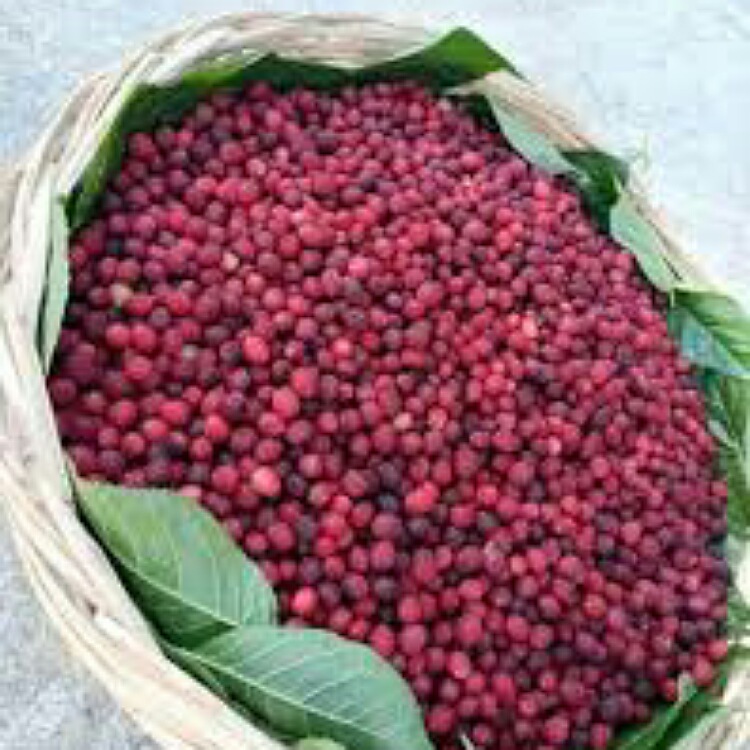Box berry or box myrtle is a type of berry that grows on trees or shrubs that are native on the Himalayan hills. These are edible and nutritious. What are it’s health benefits? Read on to know about its various nutrients.
Box berry
Box berry or box myrtle is also called kaphal in local language. These small berries grow on the hills of the Himalayas in Nepal, Bhutan and India. The other names of these berries are Myrica esculenta, bay berry, Myrica integrifolia, Myrica sapida and Myrica nagi.
The plant is a large shrub or tree that grows at an elevation of around 3000 to 6000 feet above sea level. It is 6 to 8 m tall with a yellow bark that is soft and brittle. Others flowers in bunches and are white in color.

The fruits are edible and consumed at the local level. They are pink in color that turn blackish as they mature. The lighter shades of pink berries are immature and tarter in taste. While the dark pink or black colored berries are extremely sweet to taste. The pulp is half or less than the size of the berry. The seeds inside are astringent and triangular in shape.
Nutritive value
The berries are nutritious. They have minerals, vitamins and antioxidants. The berries are 72.33% water, fiber is 5.22 % while the most part is carbs. They also have proteins and fats.
Moreover, the fruit is rich in magnesium, potassium and calcium. It also has zinc, phosphorus, manganese, iron and some copper. These minerals lower blood pressure, make bones strong and improve blood hemoglobin.

The antioxidants in them include flavonoids, alkaloids, glycosides, and other healthy phytochemicals such as quercetin.
People eat it raw or in juice form. It can be used to prepare pickles too. It also goes into making of jams and syrups.
Health benefits
The bark of the tree is yellow and used to make traditional medicine. It has glycosides, myricetin, and myricitrin. The bark and other plant parts are good in treatment of cough, fever, allergic lung conditions such as bronchial asthma, chronic bronchitis, rheumatism, inflammatory conditions of the body and diarrhea. The roots also possess similar healing properties. It is also useful in cholera.
The flowers can also cure earache, paralysis and diarrhea. The plant parts reportedly possesses antianxiolytic, antidepressive, antipyretic, antihypertensive and antidiabetic actions. The berries have analgesic action and are protective for the liver. They are anti-cancer and anti-ulcer too. They promote faster wound healing. Most of the studies are in laboratory and animal studies that have been extrapolated to humans.

The berries can also eradicate helminthiasis and have potent antimicrobial properties. Most of these benefits are due to the phytochemicals they have. These are antioxidants and mop up free radicals. Minerals and vitamins contribute towards the protection of the cardiovascular and hepatic systems.
Read here: Blackberries: a good fruit option for diabetics and heart patients
The yellow bark yields the yellow colored dye. The wood can be used for fuel, fodder, or timber.
